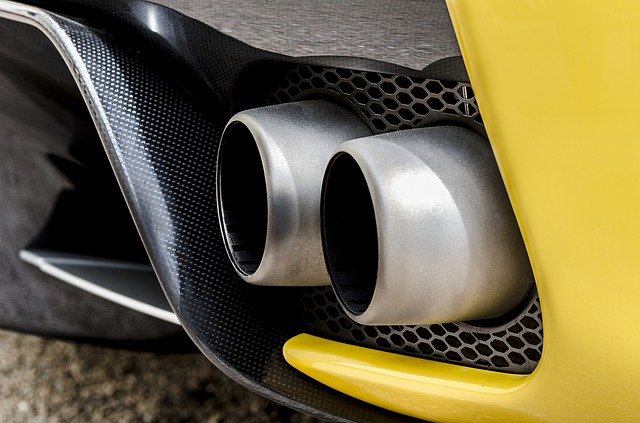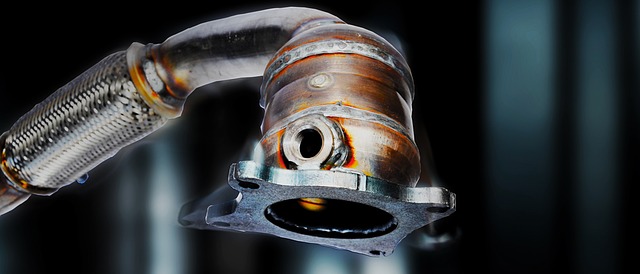Bad Catalytic Converter – Modern-day commuting is all about emissions and efficiency. Nowadays, the single top priority for any car-maker is improving emissions, beyond performance, comfort and refinement. The simple fact is that the world is moving towards a greener landscape, and the internal combustion engine is a prime contributor to gas emissions. Without the proper electrification infrastructure in place just yet, stifling and improving gas emissions from the internal combustion process is crucial. And thanks to catalytic converters, internal combustion engine nowadays are mustering impressive emissions without choking power.
Therefore, if you have a failed catalytic converter, in most major places throughout the world your car would fail car inspection. That said, a bad catalytic converter is certainly not a common failure point considering it’s ingeniously simple and functional. However, there are signs that you should be able to identify before your next inspection to tell whether if your catalytic converter is functioning normally.
Understanding how a catalytic converter works help with diagnosing emission woes. To begin with, at its very core, the catalytic converter is designed as an emissions control device that minimises pollutants emanated during the internal combustion process. It functions through a chemical redox process, in which both oxidation and reduction occur. Essentially, it converts harmful gases to relatively harmless gases. During the combustion process, an engine produces carbon monoxide, unburned hydrocarbons which are then converted to carbon dioxide and water. Modern three-way catalytic converters also reduce especially deadly nitrogen oxides into nitrogen gas.
This process is made possible thanks to a combination of precious metals, such as platinum, palladium and rhodium. They’re catalysts coated onto a honeycomb ceramic support structure via a carrier that maximizes the surface area to allow better red-ox efficiency. In a sense, a catalytic converter can be thought of as an oxygen storage with catalysts that readily promotes oxidation and in turn, reduction, to happen. Because it’s a chemical process, catalytic converters naturally function optimally during operating temperature. Hence manufacturers deftly utilize different strategies to achieve the wanted result.
Therefore, from this description, it can be understood that there really is very little to fail in a catalytic converter. What may happen though is carbon clogging, where excess soot that has failed to react deposit onto the surfaces of the catalysts. Over time, this will cripple the efficacy of a catalytic converter. To mitigate this issue, and thus extend the service life of a catalytic converter, manufacturers incorporate a regeneration process. Raising exhaust temperatures to burn off exhaust soot and promote reaction rate as well. In modern cars, this process happens whenever the oxygen storage capability of a catalytic converter is compromised. Typically, this is done through lambda monitoring, where the combustion process is intentionally altered in a controlled manner and lambda rate of change is gauged by the ECU.
That said, failure is a problem for everything, even the seemingly very well optimized catalytic converter. When your converter fails in a normal car, this is quickly ascertained by your engine control unit which then notifies you via a check engine light. In some cars, there’s also a dedicated catalytic converter warning light to tell you that your catalytic converter isn’t working properly or is overheating.
You don’t necessarily need an active indication to tell you your catalytic converter is malfunctioning though. Since a catalytic converter is only good at processing gas, any sort of contaminate such as coolant or oil can still clog one quickly. If left remedied, this will result in an asphyxiated engine which will manifest as poor engine performance and sluggish acceleration. You may even notice an excess of dark exhaust as you accelerate, a clear indication that your catalytic converter isn’t doing its job anymore.
Another clear determiner of a failed catalytic converter is if you start smelling a rotten odor from your exhaust. This actually originates from the hydrogen sulfide, which comes from the minute sulfur content from your fuel being burnt. Normally this will be converted into sulfur dioxide by the catalytic converter.
In especially grievous cases, you may be able to physically tell a bad catalytic converter. Take a peek underneath your car and look for a big, round cylinder close to your exhaust manifold. If it’s warped or even discolored, chances are the construction of the converter has been damaged and it needs to be replaced. This only happens due to egregious exhaust overheating, which can be caused by a multitude of mechanical malfunctions from misfires, engine knock and even leaking exhaust valves. Normally though, what causes this is unmonitored engine modifications that induce uncontrolled exhaust after burning. Anti-lag is one such example that quickly undermines a catalytic converter. It may also just happen due to prolonged high-load operation though.

Obviously, the easiest and most direct method to tell a bad catalytic converter is via an emissions test. This requires specialist tools that more often than not most people would not have. This tool extensively gauges what constituents are being exhausted from your vehicle, and it’s what inspection tests use.
More often than not though, a faulty converter is actually a result of another failure point in your vehicle that has been left unchecked. In fact, a catalytic converter’s performance is a good indicator of how well your car is running. If you can’t put a converter in your car without it going bad within a month or so, there’s a good chance that the problem lies elsewhere within your car that you must get resolved first. A prime candidate is the oxygen sensors or lambda sensors that provide valuable feedback to the ECU to optimize converter performance. If one goes bad, then your car’s computer would just end up chasing itself in an endless circle attempting to correct things off from faulty data.
Something you may not realize though is that leaded gas, rare nowadays, will destroy catalytic converters very quickly. Catalytic converters are not built to handle any sort of leaded gas. It’s scarce nowadays, but attempting to use leaded gas, even just a few gallons, is highly detrimental to a catalytic converter’s lifespan.
As a verdict, it’s plain to see that the catalytic converter is a critical component for any modern-day internal combustion engine. You may be able to ignore the telltale signs for a moment, but it is advisable to get your converter replaced. At the same time, be sure to give your engine a check through to ensure everything is functioning as intended.

